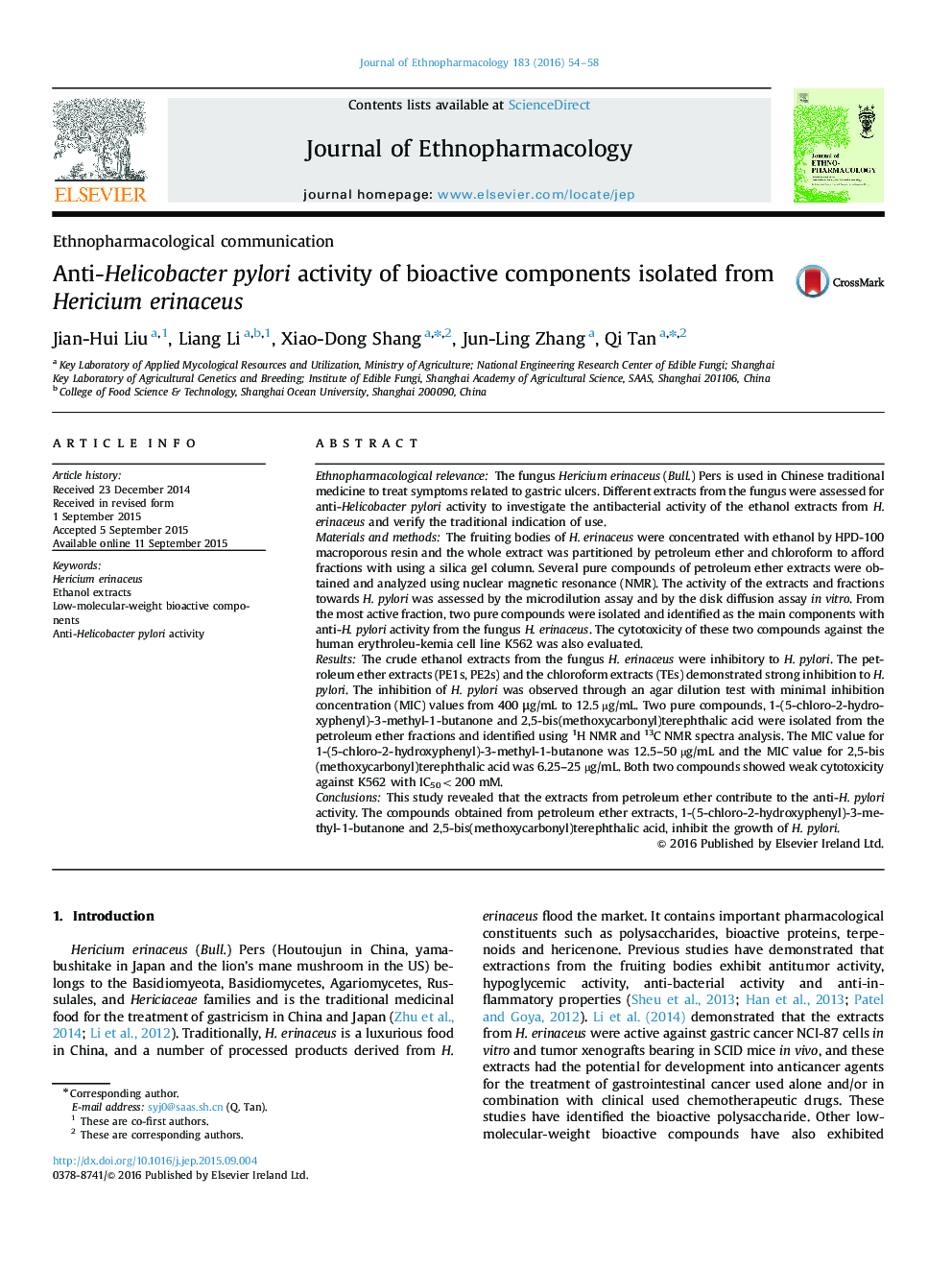| Article ID | Journal | Published Year | Pages | File Type |
|---|---|---|---|---|
| 2544880 | Journal of Ethnopharmacology | 2016 | 5 Pages |
Ethnopharmacological relevanceThe fungus Hericium erinaceus (Bull.) Pers is used in Chinese traditional medicine to treat symptoms related to gastric ulcers. Different extracts from the fungus were assessed for anti-Helicobacter pylori activity to investigate the antibacterial activity of the ethanol extracts from H. erinaceus and verify the traditional indication of use.Materials and methodsThe fruiting bodies of H. erinaceus were concentrated with ethanol by HPD-100 macroporous resin and the whole extract was partitioned by petroleum ether and chloroform to afford fractions with using a silica gel column. Several pure compounds of petroleum ether extracts were obtained and analyzed using nuclear magnetic resonance (NMR). The activity of the extracts and fractions towards H. pylori was assessed by the microdilution assay and by the disk diffusion assay in vitro. From the most active fraction, two pure compounds were isolated and identified as the main components with anti-H. pylori activity from the fungus H. erinaceus. The cytotoxicity of these two compounds against the human erythroleu-kemia cell line K562 was also evaluated.ResultsThe crude ethanol extracts from the fungus H. erinaceus were inhibitory to H. pylori. The petroleum ether extracts (PE1s, PE2s) and the chloroform extracts (TEs) demonstrated strong inhibition to H. pylori. The inhibition of H. pylori was observed through an agar dilution test with minimal inhibition concentration (MIC) values from 400 μg/mL to 12.5 µg/mL. Two pure compounds, 1-(5-chloro-2-hydroxyphenyl)-3-methyl-1-butanone and 2,5-bis(methoxycarbonyl)terephthalic acid were isolated from the petroleum ether fractions and identified using 1H NMR and 13C NMR spectra analysis. The MIC value for 1-(5-chloro-2-hydroxyphenyl)-3-methyl-1-butanone was 12.5–50 µg/mL and the MIC value for 2,5-bis(methoxycarbonyl)terephthalic acid was 6.25–25 µg/mL. Both two compounds showed weak cytotoxicity against K562 with IC50<200 mM.ConclusionsThis study revealed that the extracts from petroleum ether contribute to the anti-H. pylori activity. The compounds obtained from petroleum ether extracts, 1-(5-chloro-2-hydroxyphenyl)-3-methyl-1-butanone and 2,5-bis(methoxycarbonyl)terephthalic acid, inhibit the growth of H. pylori.
Graphical abstractFigure optionsDownload full-size imageDownload high-quality image (165 K)Download as PowerPoint slide
